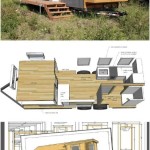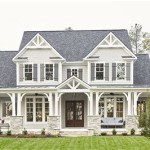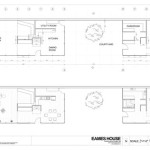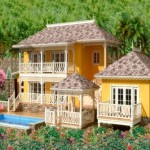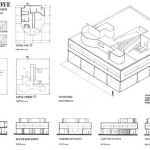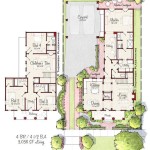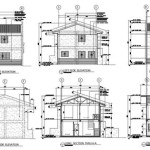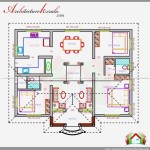2 Bedroom One Level House Plans: A Comprehensive Guide
One-level living offers numerous advantages, from enhanced accessibility to simplified maintenance. For individuals, couples, or small families, a two-bedroom, one-level house plan often presents the ideal solution. This article explores various aspects of these plans, providing information to guide potential homeowners through the selection process.
Key Considerations When Choosing a Two-Bedroom One-Level House Plan
Several factors should be considered when selecting a suitable floor plan. Analyzing these elements beforehand ensures the chosen plan aligns with individual needs and lifestyle preferences.
- Lot Size and Orientation: The dimensions and orientation of the available lot significantly influence the choice of house plan. A narrow lot might necessitate a compact design, while a larger lot offers more flexibility.
- Lifestyle and Needs: Consider how the space will be used. Do you frequently entertain guests? Is a home office required? These factors dictate the necessary size and layout of living areas.
- Budget: Establish a realistic budget early in the planning process. This helps narrow down options and prevents overspending.
- Local Building Codes: Familiarize yourself with local building codes and regulations, which may restrict certain design elements or materials.
Exploring Different Architectural Styles for Two-Bedroom Homes
Two-bedroom, one-level homes can be designed in various architectural styles, each with its distinct aesthetic appeal and functional characteristics.
- Ranch Style: Known for their long, low profile and open floor plans, ranch-style homes offer a casual and comfortable living environment.
- Craftsman Style: Characterized by handcrafted details, natural materials, and built-in features, craftsman homes exude warmth and charm.
- Modern Style: Emphasizing clean lines, geometric shapes, and minimalist design, modern homes offer a sleek and contemporary aesthetic.
- Cottage Style: Often featuring cozy spaces, charming details, and a connection to the outdoors, cottage-style homes evoke a sense of tranquility and simplicity.
Maximizing Space in a Two-Bedroom One-Level Home
Efficient space planning is crucial in smaller homes. Strategic design choices can create the illusion of spaciousness and maximize functionality.
- Open Floor Plans: Removing walls between living areas creates a sense of openness and flow, making the home feel larger.
- Multi-Functional Spaces: Designating areas that serve multiple purposes, such as a combined dining and living area, optimizes space utilization.
- Built-in Storage: Incorporating built-in shelving, cabinets, and closets maximizes storage capacity without consuming valuable floor space.
Accessibility and Universal Design Considerations
One-level homes are inherently more accessible than multi-story homes. Integrating universal design principles further enhances accessibility and accommodates changing needs.
- Wider Doorways and Hallways: Ensure doorways and hallways are wide enough to accommodate wheelchairs and other mobility devices.
- Step-Free Entries: Eliminate steps at entrances and transitions between rooms to facilitate easy movement.
- Grab Bars and Accessible Fixtures: Install grab bars in bathrooms and other areas where additional support may be needed.
Outdoor Living Spaces and Their Integration
Extending living spaces outdoors enhances the functionality and enjoyment of a one-level home. Careful planning can seamlessly integrate indoor and outdoor areas.
- Patios and Decks: Create outdoor spaces for dining, relaxing, and entertaining, extending the usable living area.
- Landscaping and Gardens: Incorporate landscaping elements that complement the home's architecture and create a welcoming outdoor environment.
- Outdoor Lighting: Strategic placement of outdoor lighting enhances safety and ambiance, allowing for enjoyment of outdoor spaces even after dark.
Energy Efficiency and Sustainable Design in Two-Bedroom Homes
Incorporating energy-efficient features and sustainable design principles can significantly reduce energy consumption and operating costs.
- Insulation and Air Sealing: Proper insulation and air sealing minimize heat loss and gain, reducing the need for heating and cooling.
- Energy-Efficient Windows and Doors: Installing energy-efficient windows and doors further reduces energy loss and improves comfort.
- Renewable Energy Sources: Consider incorporating renewable energy sources, such as solar panels, to generate electricity and reduce reliance on fossil fuels.
Budgeting and Cost Considerations for Building a Two-Bedroom Home
Understanding the various costs associated with building a home is essential for effective budgeting and financial planning.
- Land Acquisition Costs: The cost of the land itself represents a significant portion of the overall budget.
- Construction Costs: Construction costs vary based on the size and complexity of the home, as well as local labor and material prices.
- Permitting and Inspection Fees: Factor in the costs of obtaining necessary permits and inspections from local authorities.
- Landscaping and Site Development Costs: Consider the expenses associated with landscaping, grading, and other site development work.

Small One Story 2 Bedroom Retirement House Plans Houseplans Blog Com

Small One Story 2 Bedroom Retirement House Plans Houseplans Blog Com

Small One Story 2 Bedroom Retirement House Plans Houseplans Blog Com

2 Bedroom House Plans Monster

Small One Story 2 Bedroom Retirement House Plans Houseplans Blog Com

2 Bedroom House Floor Plan One Y Plans Bungalow Design

House Plan 64556 With 1007 Sq Ft 2 Bed 1 Bath

Our Best Small 2 Bedroom One Story House Plans And Floor

Picture Of Simple Two Bedroom Single Floor House With 68 M² Area 2 Plans Design

Main Floor Plan For D 583 One Story Duplex House Plans 2 Bedroom With Garage

